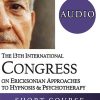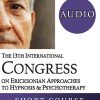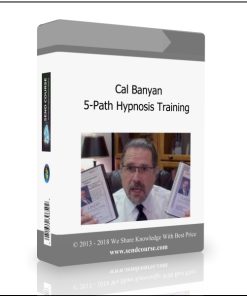IC19 Short Course 21 – An Ericksonian Look at the Fifth Vital Sign – Virgil Hayes, Doctor of Osteopathy | Available Now !
$20.00 Original price was: $20.00.$13.00Current price is: $13.00.
IC19 Short Course 21 – An Ericksonian Look at the Fifth Vital Sign – Virgil Hayes, Doctor of Osteopathy | Instant Download !
Sale Page_https://catalog.erickson-foundation.org/item/ic19-short-21-ericksonian-vital-sign-virgil-hayes-doctor-osteopathy-57584
Archive: https://archive.fo/KSFq2
Chronic pain is frequently encountered by healthcare professionals. The current treatment is primarily pharmaceutical intervention with Opioids or NSAIDS that create new problems and address a limited part of the pain. Pain, whether physical or mental/emotional, tends to be experienced as one. Anticipated pain and memories of past painful incidents also contribute to the experience of pain.
This presentation examines chronic pain over a broader cognitive, emotional, and behavior context. It goes beyond matching opiates to pain receptors, by including pain’s emotional and cognitive roots. Physical pain is exacerbated by emotional pain; and emotional pain is exacerbated by physical pain. Pain is generally addressed as a physical issue, and not as a emotional or cognitive issue. The narcotics have no impact on relieving emotional, or mental pain, but are the current ‘go to’ method of treatment.
This presentation presents a paradigm that chronic pain is not limited to a physical or somatic dysfunction, but has cognitive and emotional roots as well. This conceptualization empowers the healthcare provider, and individuals to look at the plethora of generally unacknowledged sources contributing to their experience of pain; and opens up other co-creative interventions.
To understand the difficulties of chronic pain its good to understand there are three faces of pain. One face is the pain in the present. Another face is memories of pain experienced in the past. The third face is the anticipation (fantasized) of pain in the future. Thoughts and emotions can become a neurological loop (habit) that feeds upon itself unless the supporting patterns are interrupted.
The presentation uses case studies and lecture to assist the clinician in seeing, and understanding the creation of chronic pain in order to effectively teach the patient to manage it.
Educational Objectives:
- List two emotional or cognitive components of pain.
- List two therapeutic hooks to help gain rapport, and direct the intervention.
- List two words or phrases that connect physical pains to emotions and thoughts.
1 review for IC19 Short Course 21 – An Ericksonian Look at the Fifth Vital Sign – Virgil Hayes, Doctor of Osteopathy | Available Now !
Add a review Cancel reply
Related products
NLP & Hypnosis
NLP & Hypnosis
Ecommerce
Ecommerce
Ecommerce
Ecommerce












Cristina Hodge –
Very good service, but I did not like the CD’s | IC19 Short Course 21 – An Ericksonian Look at the Fifth Vital Sign – Virgil Hayes, Doctor of Osteopathy